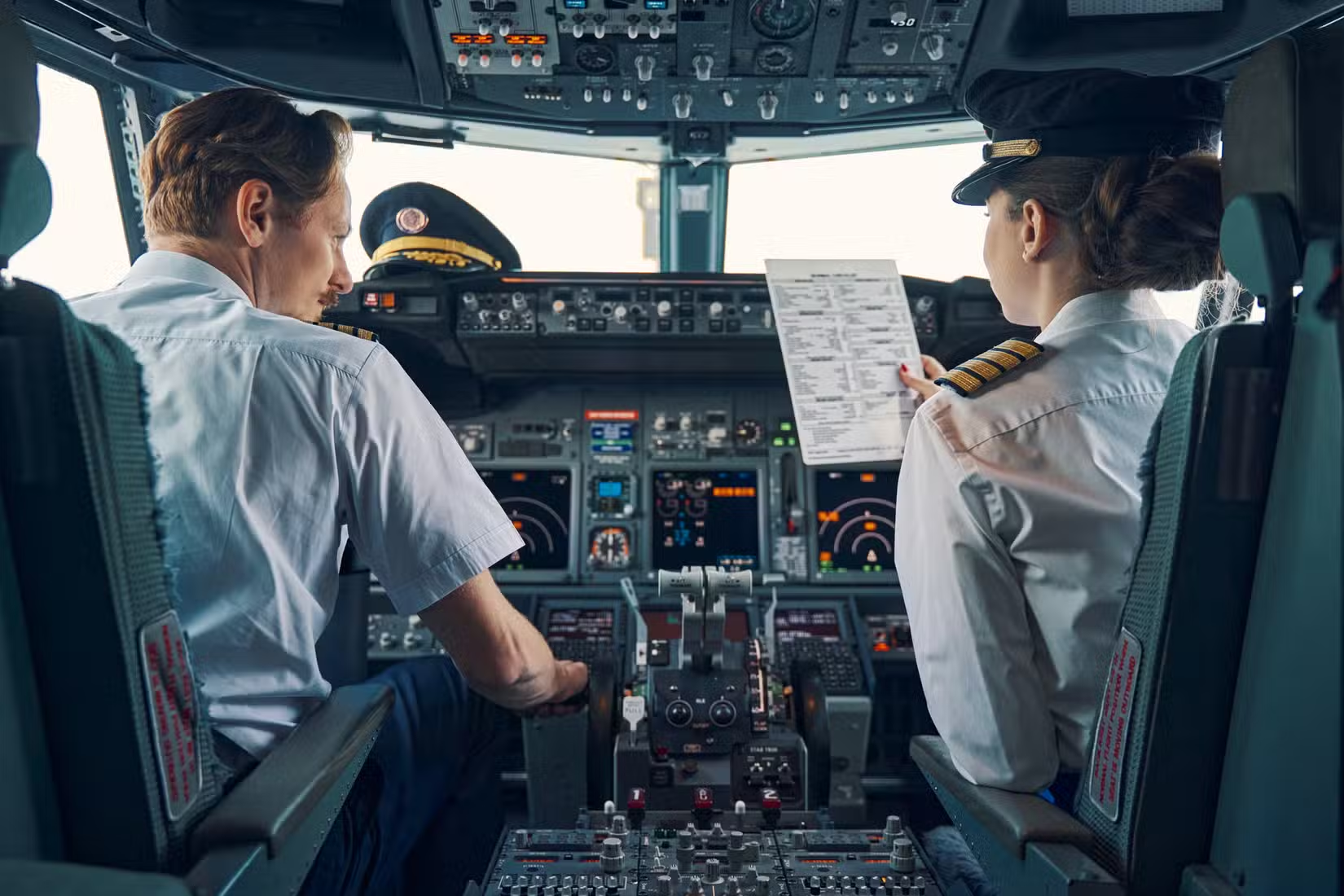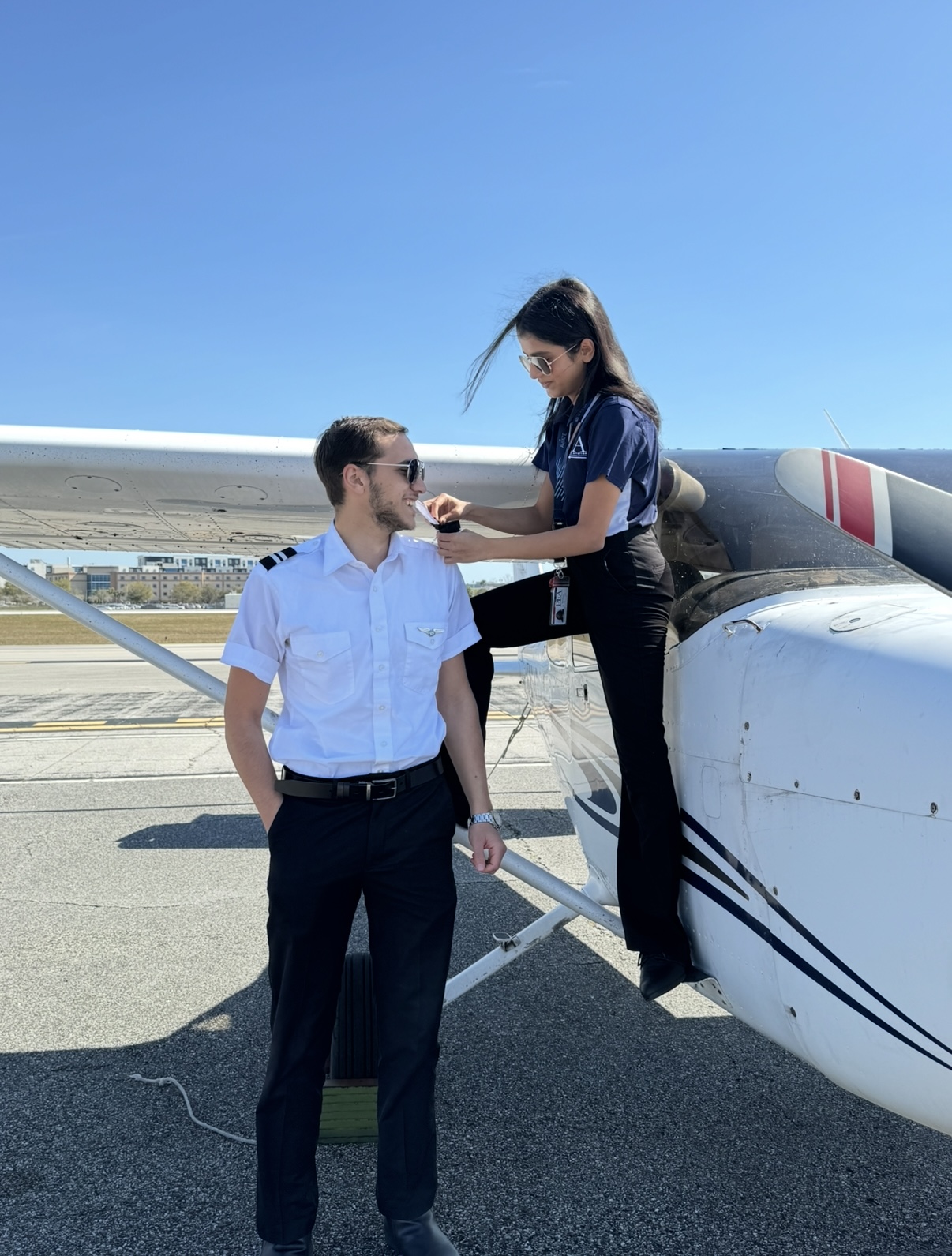How Pilots Avoid Thunderstorms
With its clear skies, sunshine, and warm temperatures, Florida is one of the best locations out there when it comes to flight training. But clear skies are often a product of unstable air, which makes Florida a hot spot for thunderstorm activity in the summer. And an airplane is no match for a thunderstorm. Pilots must take action to avoid thunderstorms, which can be challenging, especially during the summer months. How do they do it? Here are a few ways.
1. Preflight Planning
Thunderstorm avoidance is mostly accomplished during the early planning stage of a flight. The first thing a pilot will do during the planning process is check the weather by watching the news or looking at weather websites. As the departure time gets closer, the pilot will plan his or her flight using weather data from official weather sources like www.aviationweather.gov or one of the popular iPad apps like ForeFlight. Pilots have fantastic forecasting tools and weather reports available that allow them to see and predict thunderstorm activity. If the proposed route of flight goes through thunderstorm activity or there is thunderstorm activity forecasted for the flight path, the route will be altered, either around the thunderstorm or in a different direction. Flying through a thunderstorm is just not an option.
The second part of the planning process involves calling a Flight Service station to get a weather briefing. The flight service specialist is trained to provide the pilot with a comprehensive weather briefing and other information for their route of flight. The briefer will give the pilot a “big picture” view of the weather in the area as well as reported and forecast conditions at the departure and destination airports. This allows the pilot to make the best decision about their route of flight, including which areas they may want to avoid and which airports might be good alternates if bad weather prevents them from landing at their destination.
2. In-flight Weather Services
During training, flights might be cancelled often due to thunderstorms. After all, the risk is just not worth the reward. But in the real world, corporate and airline pilots are tasked with getting their passengers where they need to go and they will often go to great lengths to plan flights around thunderstorms. And sometimes, pilots will just depart, knowing that they’ll need to circumnavigate a storm or two in order to get to their destination. To do this, they use a variety of inflight tools such as a service called Hazardous Inflight Weather Advisory Service (HIWAS) and En Route Flight Advisory Services (EFAS) as well as the many digital weather products available today via iPads and other tablets. This information gives pilots updated and real-time information about thunderstorm activity.
3. Air Traffic Controllers
Pilots and controllers work together to ensure everyone gets where they need to go safely, and avoiding thunderstorms is no exception. Air traffic controllers will advise pilots on weather conditions when warranted, and pilots can often be heard requesting updated weather conditions from controllers, or requesting deviations to avoid thunderstorms when necessary. A pilot is ultimately responsible for not flying into a thunderstorm, so prompt communication with ATC is necessary to avoid them when the proposed route of flight takes a pilot into a storm. Pilots often use ATC as a resource, since controllers on the ground often have access to more up-to-date weather sources than pilots do.
4. Weather Radar Technology
These days, digital onboard technology is a helpful resource for pilots that fly technologically advanced aircraft. Aircraft with modernized avionics will often have weather radar systems, which gives pilots a graphic display of the location and intensity of thunderstorm activity and precipitation. Airborne weather radar is a great tool for thunderstorm avoidance, but it has disadvantages and shouldn’t be relied upon as a sole means of detecting storms.
5. See and avoid
One of the easiest and most common methods for detecting summer thunderstorms is the see-and-avoid method, which just means that a pilot shouldn’t fly into a thunderstorm. This works in locations where thunderstorms are surrounded by clear skies, but sometimes thunderstorms are embedded in cloud layers, making them difficult to see. Embedded thunderstorms are especially dangerous for pilots traveling long distances, and a reason it’s so important for pilots to get a preflight briefing.
6. Divert
Even the best preflight planning and onboard weather radar won’t move a storm system out of the way, so there are times when a pilot must divert to an alternate airport. Diversions are rare, but are sometimes the only option when storm systems are unpredictable or widespread.





